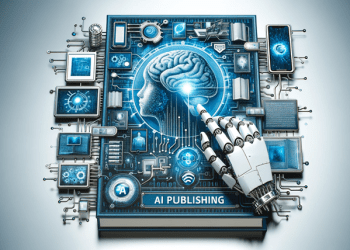Over the years, there have been many changes to the call center and customer experience environment. These changes range from virtual agents and cloud communications to more strategic analytics thinking, purposeful social media dialogues, and creative methods of artificial intelligence inclusion.
As the pandemic prompted businesses to modernize their business communications nearly overnight, we’ve witnessed even more changes in how organizations adapt to the changing needs of their consumers and employees.
What is Call Center Technology?
Call center technology includes all software tools that assist customer-facing agents and departments in running smoothly. It automates, manages customer relationships, and evaluates customer behavior and other call center performance indicators.
Its objectives include improving the customer experience, lowering operating expenses, and increasing productivity via more effective communication and cooperation.
For example, Computer Telephony Integration (CTI) connects the office computer and phone systems, enabling capabilities such as customer data screen pops.
What Do Customers Look for in Customer Service?
The reality is at the top of every company leader’s mind: customer service can make or ruin your organization. As a result, many companies have made good customer service a major strategic goal, while others have already used it to gain a competitive edge.
Business owners allocate large sums of money to get the best customer support software products.
Nonetheless, going above and beyond to keep clients pleased and satisfied is a difficult task these days. Why?
The marketplace is large, crowded, and unpredictable, as seen by continually shifting customer expectations. Customers are now the primary center of customer service, yet their expectations are constantly changing.
The Next “Big Thing” in Technical Support for Call Centers
Now that you are aware of what the customers seek, here are a few aspects that are expected to guide the call centers.
- Customer interactions include artificial intelligence.
Businesses invest more in predictive analytics and AI solutions to improve call center experiences.
As early adopters enhance call routing AI software, we may expect AI to be utilized more often. Improved call center technical support response times and more links between various media platforms are anticipated. Taking a look at the benefits of AI in their organization can be helpful for many entrepreneurs.
- Digital transformation
Businesses have consistently attempted to distinguish themselves through pricing or product quality.
However, it has been observed that customers are increasingly seeking something more: a satisfying experience that results in a long-term partnership with a company. They now expect a more thorough and consistent service since customer interactions are no longer standalone activities.
A significant component of this is digital transformation, the use of cutting-edge technologies that have reorganized the contemporary corporate environment.
With innovations like unified multichannel communications and machine-to-machine connections via the Internet of Things (IoT), firms that wish to remain competitive will need a forward-looking digital transformation plan.
- Better analytics for contact centers
The days of depending on supervisor talent and expertise to maximize a contact center agent’s potential are long gone.
Even smaller organizations are already utilizing cutting-edge analytics to transform data, such as call and screen records, chats, SMS messages, and more, into genuinely helpful feedback for their employees.
Manual observation and monitoring are insufficient since there is too much data. More omnichannel call centers are starting to rely on analytics systems significantly to create dashboards with the facts that impact their operations.
This data dashboard is increasingly being shown on user interfaces so that call agents and management may obtain real-time information on client experiences.
- Call centers will use Cloud communications more.
Many firms already include Cloud communications in their plans, but contact centers now place a special emphasis on cloud communications. They are essential for firms that wish to benefit from seamless team interactions and collaboration due to the constant growth of remote call agents.
With cloud communications, conventional office-based contact centers may expand and contract their workforces and take on additional locations as the market needs.
Additionally, switching to the cloud need not be done all at once. Vendors who provide hybrid cloud alternatives can help you transition your company to the cloud at your own pace or build a customized architecture using the best features of several deployment methods by your business requirements.
Improving Call Center Technology in Major Offshore Destinations
Being a major offshore destination, call centers in the Philippines are now leveraging AI tools to improve customer experience, efficiency, and profitability. It is intended to assist your employees in spending less time on administrative activities and more on the things most essential to their success.
Businesses can take several approaches to increase the efficiency of call centers, including omnichannel support, QA technologies, digital scorecards, data analytics, and reporting, cloud software, AI, and learning management systems.
The secret is to use the appropriate cutting-edge call center technology for your requirements and always to keep an eye on the newest developments.
Conclusion
The company may select its preferred strategic course as we head into 2023 and beyond by looking at these call center sector economic, technical, social, and international working methods. Call center leadership considers the future of call centers where company continuity and customer experience will undoubtedly be entwined as the globe limps away from the global crisis and into a new era of uncertainty.









